#Low Code
Explore tagged Tumblr posts
Text
You can (re)build a service
Due to the world’s toughest internet laws, running a service which posts the best graphic design articles in Germany is not an easy thing to do.
Things like self‑hosting, reposting on your own domain, and so on are absolutely out of the question, unless you are really keen on testing out the limits of your (legal) budget.
So we slowly started rebuilding our project grafikdesignfeed using freshrss, ifttt, buffer and free socials.
The logic is as follows:
freshrss gathers all kinds of rss‑feeds, we favorite the articles we think are cool, these get sent to IFTTT where an applet takes these favorites, sends them to a buffer account which sends these favorites to (as of now) our account on Bluesky and our account on X (we are working on more socials as well, but that takes time; not work, just time, so we are waiting) and that is the whole machine called grafikdesignfeed.
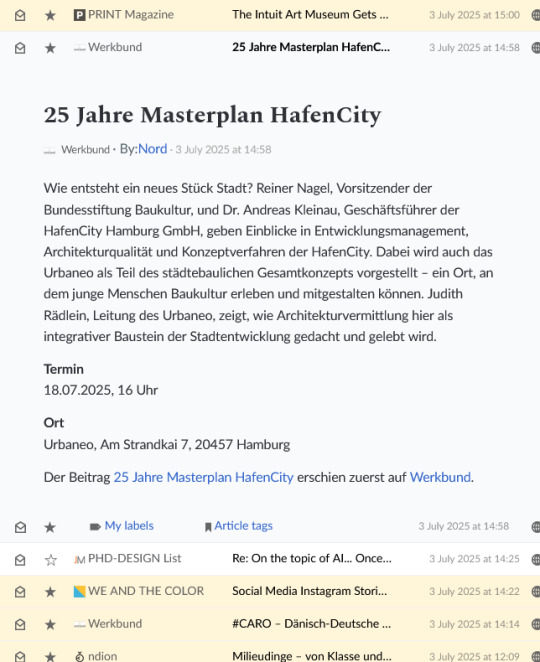
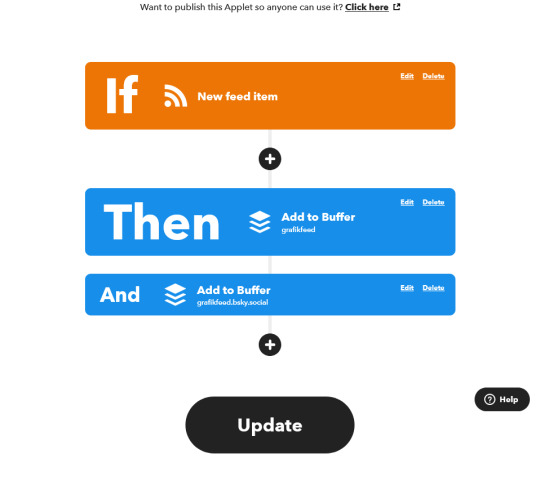
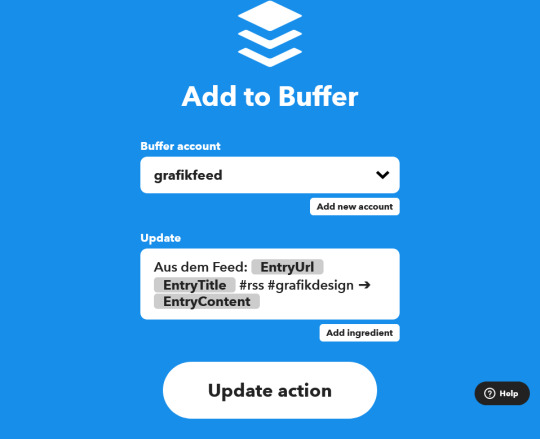
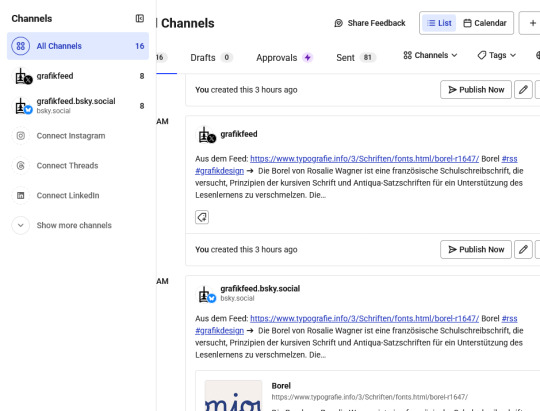
We are doing this because we want to provide a service to the German‑speaking part of the (not only graphic) design world, and because we really like building useful little machines like this one.
Who knows, maybe you like using our machines as well?
#code and canvas#grafikdesign#grafikdesignfeed#graphic design#graphicdesign#online services#services#infotainment#no code#low code#automation#rss#freshrss#buffer#ifttt#feed as a service
3 notes
·
View notes
Text
How Low-Code Platforms Are Transforming Healthcare and Elevating Patient Experience

The healthcare sector is a highly evolving landscape. The current race for digitization has made it crucial for service providers to stay updated with the latest technology and regulations. Patient satisfaction is of the highest requirement, but inefficient processes, paperwork, and security concerns often hinder positive outcomes. To enhance speed, transparency, and efficiency, many providers are turning to low-code platforms, driving digital transformation.
Why Low-Code is a Perfect Fit for Healthcare
Low-code platforms enable both technical and non-technical users to build digital healthcare solutions. It simplifies healthcare operations, speeds-up processes and makes healthcare more accessible for patients.
Most healthcare professionals lack IT training, limiting their ability to use digital tools. Low-code bridges this gap by providing an intuitive interface for rapid, cost-effective app development. With scalable architectures and seamless third-party integration, these platforms improve workflows, patient care, and operational efficiency.
Key Benefits of Low-Code in Healthcare
Workflow Optimization and Automation:
Low-code platforms like iLeap streamline administrative and clinical processes. Automating billing, budgeting, and resource management reduces manual effort and errors. Tasks like appointment scheduling and reminders can also be automated, freeing up time for patient care.
Seamless Integration:
A majority of legacy healthcare enterprises rely on legacy systems which is often a major reason for downtimes and slow processes. A robust low-code platform integrates easily with existing software and third-party applications, ensuring unified workflows without IT disruptions.
Customizable Features:
Low-code solutions automate emails, manage patient records, and schedule appointments efficiently. Platforms like iLeap also support threshold management and escalation for timely responses to critical situations.
Enhancing Patient Care with Low-Code
Patient Registration and Records :
Custom applications streamline patient intake, scheduling, second opinions, and billing, reducing wait times and improving experiences.
Automated Appointment Reminders and Feedback:
By automating reminders and surveys, healthcare staff can focus on critical tasks, reducing no-shows and improving service quality.
Telehealth and Centralized Communication:
Legacy systems cause fragmented communication and delays. Low-code platforms facilitate telehealth solutions, including video consultations, secure messaging, and EHR integration, ensuring timely care.
Compliance and Accountability:
Regulatory compliance is crucial. Low-code solutions streamline reporting and documentation, ensuring transparency and adherence to guidelines. By 2030, on-demand compliance reports will be necessary, making digital transformation essential.
iLeap: Driving Digital Healthcare Transformation
iLeap enables healthcare providers to build secure, scalable applications tailored to their needs. By optimizing workflows, financial management, and patient experiences, iLeap helps organizations stay ahead in digital transformation.
Learn more about iLeap’s low-code application development platform. Schedule a call with us
2 notes
·
View notes
Text
Imagine a future where every business operates at its peak, empowered by software crafted just for them. This isn't a distant dream – it's happening right now! Custom software development is not just optimizing operations; it's redefining the very essence of how businesses function. It's a journey towards excellence, where technology meets creativity to unlock unprecedented potential. Join the conversation on how custom software sets new standards in the business world.
#custom development#softwaredevelopment#business#software solutions#agiledevelopment#low code#tech#future#mobiosolutions#uk
2 notes
·
View notes
Text
Engineering Firm Enhances Inventory Management with Low-Code Solution
A global engineering company revolutionized its inventory management processes by implementing a low-code platform. The solution enabled the firm to automate critical inventory tasks, streamline workflows, and improve data accuracy. As a result, the company experienced a significant reduction in manual errors, increased operational efficiency, and optimized its stock levels. The low-code platform's flexibility and user-friendly interface allowed for rapid deployment and easy adaptation to the company's unique needs, ensuring a seamless integration into its existing systems.
Content source - https://www.damcogroup.com/client-success/engineering-company-optimized-inventory-management-with-low-code
1 note
·
View note
Text
It's not just Gen Z and Gen Alpha who I'm worried about as a Software Engineer though. They're trying to take away our tools to build anything and replace them with drag-and-drop GUIs, and I've already been tasked with trying to make the BS they're calling "Anyone Can Make An App" work. Microsoft's entire Power Platform is built on this. They want to avoid individuality or actual features (not bugs!). They want to "eliminate bugs" by forcing you to work in a tiny, infinitesimal space of what you're allowed to do in these new "app builders" instead of having a free range of the app from code to end product. And they claim it's "easier." One example of this was me being the younger programmer (with almost 2 decades under my belt) who was forced to spend four months working in and trying to create something as simple as a Time Off Request App (which is one of their app bases!) in Power Apps to have proof of concept, except all I did was prove that it was a steamy pile of nothing that couldn't work for my high yield company. And it's not just Microsoft that is doing this. iOS and Android have banged out similar "low code" and "no code" options. And don't get me started on using LLMs to do your coding. People are doing it! And releasing apps with it! And they're a freaking nightmare to look at as an engineer who was brought up working in C, C++, Java (plain Java, all these JS Frameworks are gonna collapse and be useless as soon as we figure out what the next big thing is), Python, and even Assembly. I was the last class of Computer Engineering students that was taught Assembly. The lowest-level language they teach at my university now is Java, and it's not even a useful class. It's the kiddie pool like it's always been. I didn't understand anything I was doing until I dropped out after my Junior year, took a community college course, and actually made something from code to finish. it worked, and I could use it. Then, I understood it. This new stuff? They do not want you to know how it works and that is terrifying.
another thought about "gen z and gen alpha don't know how to use computers, just phone apps" is that this is intentionally the direction tech companies have pushed things in, they don't want users to understand anything about the underlying system, they want you to just buy a subscription to a thing and if it doesn't do what you need it to, you just upgrade to the more expensive one. users who look at configuration files are their worst nightmare
#rant#low code#no code#go to hell#app building is currently a cesspool#because so many of them are trying to shove it into little tiny boxes#for no other reason than control#and capitalism#out of credits
79K notes
·
View notes
Text
A Smarter Testing Strategy for Low-Code/No-Code Apps

Low-code/no-code (LCNC) platforms may simplify development—but they don’t simplify complexity. Underneath the visual workflows lies intricate business logic, third-party APIs, and critical data integrations—all potential failure points.
To test LCNC apps effectively, a nuanced QA strategy is essential. Here’s how:
Focus on business-critical workflows (checkout, login, search)
Ensure deep API testing for robust data flow
Combine automated regression testing with manual exploratory testing
Never ignore performance and security—even if the app was built in days
While LCNC testing platforms offer visual test creation and AI-powered maintenance, these alone aren’t enough for enterprise-grade apps.
That’s why BugRaptors blends technology with expertise. Our automation testing services deliver quality at scale—without compromising speed. Whether it’s setting up reusable test modules, integrating with CI/CD pipelines, or mitigating risks with security testing, we ensure that your LCNC apps remain resilient and reliable. QA isn't just a checkpoint—it's your innovation enabler. Let BugRaptors be your partner in next-gen LCNC testing.
0 notes
Text
How to Build an Android App Using a Low-Code Platform?

Creating a mobile app used to mean long development cycles, huge budgets, and writing thousands of lines of code. But thanks to the evolution of low-code platforms, building an Android app is no longer limited to experienced developers with deep coding knowledge. Whether you are a startup founder, a product manager, or an individual entrepreneur, low-code tools are revolutionizing how applications are built.
In this guide, we will explore how to create an Android app using FAB Studio, an advanced AI-powered code generation platform that simplifies Android application development. You’ll learn what a low-code platform is, its benefits, how FAB Studio can help, how the development process works, real-world use cases, and common challenges to keep in mind.
What Is a Low-Code Platform?
A low-code platform is an application development environment that reduces or eliminates the need for traditional coding. Instead of writing code line by line, developers and non-technical users can use drag-and-drop interfaces, visual workflows, and pre-built templates to build software faster.
Traditional Android app development requires deep expertise in Java, Kotlin, XML, and backend technologies. But low-code platforms make it possible to create applications using simple visual elements and automated code generation. This approach speeds up the development process and allows businesses to deliver applications to the market quickly.
Low-code platforms like FAB Studio are ideal for:
Startups looking to launch their app MVP quickly
Businesses creating internal tools
Enterprises needing scalable apps without heavy IT resources
Non-technical founders who want to build apps without hiring a large development team
Why Choose a Low-Code Platform for Android App Development?
Low-code platforms are transforming how mobile apps are built. Here’s why they’re worth considering:
Speed of Development — Pre-built templates, automation, and visual tools make app creation significantly faster.
Cost Efficiency — Reduced dependency on experienced developers lowers development costs.
Flexibility — Many platforms allow you to export your code and integrate it with existing systems.
Ease of Use — Visual builders and automated code generators make it easy for anyone to build an app.
Scalability — Modern low-code platforms support scalable frameworks, enabling apps to handle high traffic as they grow.
How Can FAB Studio Help Build Your Android App?
FAB Studio is a powerful application development platform that combines AI-powered code generation and low-code capabilities. Unlike conventional development environments, FAB Studio focuses on automation and simplicity while maintaining professional-grade code quality.
Key Features of FAB Studio:
AI Code Generator: Automatically creates clean, production-ready code based on your specifications.
Pre-Built Modules and Templates: Ready-to-use components for common app functions like user login, product catalogs, and payment systems.
Flexible Tech Stack Options: Choose from popular frontend (React.js, Angular, Vue.js), backend (Node.js, Java, .NET), and database (MongoDB, PostgreSQL, MySQL) technologies.
Cloud-Ready Deployment: Deploy directly to platforms like AWS, Google Cloud, or Azure.
Visual Data Modeling: Simplify complex data relationships with an intuitive visual interface.
This platform reduces development time dramatically, allowing startups and enterprises to launch apps faster without compromising on performance or security.
How Does FAB Studio Work for Android App Development?
FAB Studio provides a streamlined process to help you move from an idea to a fully functional Android app quickly.
Step 1: Sign Up and Access FAB Studio
The journey begins with creating an account on FAB Studio. Visit fabbuilder and sign up. Once logged in, you’ll enter an intuitive workspace designed specifically for application development.
FAB Studio’s development environment comes with pre-built modules, automation tools, and templates tailored for Android app creation. This eli
minates the complexity of setting up servers or frameworks manually, allowing you to focus on building your app.
Step 2: Describe Your App
Before writing any code, FAB Studio’s AI assistant guides you through defining your app’s core purpose, target audience, and main features. Simply provide:
App Name
Problem It Solves
Key Functionalities
This information helps the platform automatically generate a basic app structure, ensuring you start on the right foundation.
Step 3: Choose Your Tech Stack
FAB Studio allows you to choose from modern, battle-tested technologies:
Frontend: React.js, Angular, or Vue.js
Backend: Node.js, Java, or .NET
Database: MongoDB, PostgreSQL, or MySQL
Selecting the right tech stack ensures your app is scalable, secure, and easy to maintain. Even if you’re unsure which technologies to choose, FAB Studio provides recommendations based on your app’s needs.
Step 4: Define Your Data Model
Apps rely on structured data, and FAB Studio makes it easy to build data models visually. You can create entities like user profiles, products, or transactions using drag-and-drop tools. For example:
User Profiles: Name, email, phone number, preferences
Products: Item name, description, price, stock
Transactions: Amount, date, payment methodThis ensures your backend is properly structured before moving to design and deployment.
Step 5: Preview and Iterate
FAB Studio’s live preview feature allows you to test your app in real time. You can click through screens, test workflows, and evaluate the user interface before finalizing it. This interactive step allows quick iterations and avoids costly reworks after deployment.
Step 6: Deploy Your App
Once everything looks perfect, you’re ready to launch. FAB Studio offers multiple deployment options:
Cloud Deployment: Deploy directly to AWS, GCP, or Azure with one click.
Source Code Download: Download the generated source code for deployment on your preferred hosting platform.
Containerized Deployment: Use Docker for scalable, containerized application hosting.
After deployment, collect user feedback and continue enhancing your app using FAB Studio’s integrated update and maintenance tools.
What Are the Benefits of Using FAB Studio’s Low-Code Platform?
Using FAB Studio for Android development offers multiple advantages:
Faster Time-to-Market: Launch your app in weeks instead of months.
Lower Development Costs: Reduce dependency on large coding teams.
Cross-Platform Flexibility: Build Android apps and expand to iOS with ease.
AI Code Generation: Automatically generate application logic based on your inputs.
Professional-Grade Output: Even with little coding knowledge, you get production-ready apps.
What Are Some Real-Life Use Cases of FAB Studio?
FAB Studio has been successfully used in multiple industries:
E-commerce Apps — Launch an online store with product listings, cart functionality, and payment gateways without writing code from scratch.
Healthcare Platforms — Build apps with appointment booking, patient records, and telemedicine features.
Educational Apps — Create apps for online learning, video streaming, and student dashboards.
Corporate Tools — Develop internal HR systems, project management dashboards, and employee engagement tools quickly.
What Are the Common Challenges When Using Low-Code Platforms?
While low-code development is highly beneficial, there are some challenges to consider:
Customization Limitations — Complex custom features may still require manual coding.
Platform Dependency — Moving an app built on one low-code platform to another can be difficult.
Scalability Concerns for Very Large Projects — While most low-code platforms scale well, extremely complex enterprise-level apps may require traditional development.
Learning Curve for First-Time Users — Although easier than coding, low-code platforms still require users to learn their environment and workflow.
Why Should You Choose FAB Studio Over Other Low-Code Platforms?
Not all low-code platforms are created equal. FAB Studio stands out because it combines:
AI-Powered Code Generation for faster automation
Cross-Platform Support for Android and iOS
Enterprise-Ready Features such as cloud deployment and Docker integration
Flexible Output allowing developers to export full source code
For businesses looking to deliver professional-quality apps without long development cycles, FAB Studio provides an excellent balance of automation, flexibility, and scalability.
Conclusion
Building an Android app no longer requires months of coding and large development teams. With low-code platforms like FAB Studio, you can quickly create, customize, and deploy apps without compromising on quality or performance.
Whether you are a startup launching your first MVP, a business creating internal tools, or a developer looking to speed up workflows, FAB Studio’s AI-powered code generation platform simplifies the process significantly. From signing up to deploying on the Google Play Store, you can bring your app idea to life faster, more affordably, and with far less technical complexity.
If you’re ready to build your Android app, explore FAB Studio and experience how low-code development can transform your approach to mobile app creation.
FAQ
1. What is a low-code platform for Android app development?
A low-code platform allows users to build Android apps using visual tools and pre-built components instead of writing extensive code, speeding up development.
2. How does FAB Studio help in building Android apps?
FAB Studio provides AI-powered code generation, a drag-and-drop UI builder, and cloud deployment features, making Android app development faster and simpler.
3. Can I build an app without coding knowledge using FAB Studio?
Yes, FAB Studio’s no-code and low-code features enable even non-technical users to design, develop, and deploy Android apps easily.
4. Is a low-code app as scalable as a traditionally coded app?
Yes, apps built with platforms like FAB Studio are scalable and can handle growing user bases, with options for cloud hosting and advanced integrations.
5. How long does it take to build an Android app using FAB Studio?
With FAB Studio’s automated tools, you can create and deploy a functional Android app within days or weeks, compared to months with traditional coding.
#code generation#app development#low code app development#low code#low code platform#mobile app development#fab builder#fab studio#Code generation platform
0 notes
Text
How Does Robotan's Low-Code Platform Work?
Robotan is designed to simplify RPA for real-world business use. It offers a powerful yet accessible toolkit that lets you build, deploy, and monitor automation workflows with ease. Some of the key features include:
Smart Scheduling: Run bots on set triggers (e.g. an email received, a file uploaded, or a form filled).
Real-Time Dashboard: Monitor all active bots, see task histories, get error alerts, and track performance live.
AI Document Processing (OCR): Extract information from PDFs, scanned files, forms, or invoices.
These features allow businesses to eliminate bottlenecks in departments like HR, finance, operations, logistics, and customer service—without writing a single line of code.
0 notes
Text
The Rise of AI-Powered Low-Code Platforms
AI is revolutionizing software creation and making low-code/no-code platforms into smart development tools.
Low-code and no-code services are changing quickly; now they have AI to help make software faster, smarter, and easier for more people. By 2025 these platforms do more than just drag-and-drop, they use generative AI, which can turn simple language prompts into working apps.
1) AI-Driven Code and UI Generation
With AI built into low-code/no-code development tools users can explain their app ideas in regular sentences. The system then creates designs business logic & even necessary backend processes– effectively transforming concepts into tangible products extremely fast!
2) Predictive Automation
AI boosts these platforms by giving smart suggestions, automatically creating fields, and organizing data flows based on what you want, speeding up development even for big enterprise tasks.
3) Quality and Testing Built-In
Today's platforms have AI tools for finding bugs and checking quality. This makes sure your applications launch quickly and then run well with few errors.
4) Conversational Interfaces
Some platforms let you use voice or chat to interact. You can literally "talk to" the app builder getting instant functional prototypes, pushing the limits of low-code/no-code services further still.
Final Thought:
AI plus low code no code application development is totally changing what's possible. The new generation of tools doesn't just make coding simpler, it automates the whole thing allowing anyone to build powerful applications quickly so they work at scale.
#artificial intelligence#mooglelabs#technology#ai ml development#no code#low code app development#low code
0 notes
Text
🚀 Power Automate vs Azure Logic Apps – Which one to choose? Explore this in-depth comparison covering features, licensing, use cases, pros/cons, security, and more. A must-read for automation enthusiasts and IT decision-makers! #PowerAutomate #AzureLogicApps #Microsoft365 #Automation #LowCode #Azure
#Azure Integration#Azure Logic Apps#Cloud Automation#Enterprise Automation#Logic Apps vs Power Automate#Low Code#Microsoft 365#Power Automate#RPA#Workflow Automation
0 notes
Text
Unlocking The Power Of Simplicity With Low Code Rad Platforms
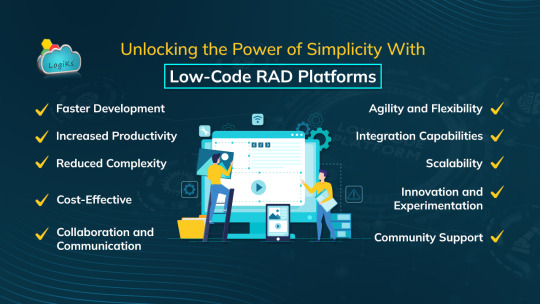
In a dynamic era driven by the constant evolution of technology, the demand for rapid and efficient application development has never been more pronounced. Low-Code Rapid Application Development Platforms, a transformative method that empowers developers to create applications with minimal hand-coding. This approach streamlines the application-building process, reducing reliance on traditional programming languages.
Low-Code RAD (Rapid Application Development) platforms offer pre-built components, accelerating development cycles and enabling quick iterations. In this landscape of innovation, Low-Code Development emerges as a game-changer, aligning with agile principles and providing a solution for organizations seeking speed, flexibility, and cost-effectiveness in the ever-evolving digital landscape. This blog delves into the benefits, scenarios for adoption, and the potential future impact of Low-Code RAD Framework, shedding light on its pivotal role in shaping the future of application development.
Click here to read more about the Low code RAD Framework!
1 note
·
View note
Text
The Need for Digitization in Manufacturing : Stay Competitive With Low-Code

Industry 4.0 is transforming manufacturing with smart factories, automation, and digital integration. Technologies like the Internet of Things (IoT), artificial intelligence (AI), and low-code applications are enabling manufacturers to streamline processes and develop customized solutions quickly. Low-code platforms empower manufacturers to adapt to global demands, driving efficiency and innovation.
Previously, cross-border transactions in manufacturing faced delays due to bureaucracy, complex payment mechanisms, and inconsistent regulations. These challenges led to inefficiency and increased costs. However, Industry 4.0 technologies, such as digital payments, smart contracts, and logistics tracking, have simplified international transactions, improving procurement processes.
Low-code applications are key in this transformation, enabling rapid development of secure solutions for payments, customs clearance, and regulatory compliance. These platforms reduce complexity, enhance transparency, and ensure cost-effective, secure global supply chains. This shift aligns with the demands of a connected global economy, enhancing productivity and competitiveness.
The Need for Digitization in Manufacturing
Digitization has become crucial for manufacturing to stay competitive, with new technologies and the need for automation driving the sector’s transformation. Key features include ERP systems for centralized management of inventory, finances, and operations; digital supply chain tools for visibility and disruption prediction; real-time data for performance monitoring; sustainability tracking; and IoT/RFID for better tracking, accuracy, and reduced waste.
Low-code applications play a pivotal role in digitization by enabling rapid development of tailored solutions for inventory management, supply chain optimization, and performance analytics. These platforms streamline processes, reduce manual work, and enhance agility, helping manufacturers implement digital transformations quickly and cost-effectively.
Upgrading Manufacturing Capabilities in the Era of Industry 4.0 with Low-code Solutions
Low-code applications are becoming essential for digital transformation in manufacturing, addressing operational challenges while managing increased production demands and a shortage of skilled staff. These platforms enable manufacturers to quickly develop tailored applications without needing specialized coding expertise, fostering faster, more flexible operations. By streamlining processes and aligning with modern consumer demands, low-code technology helps bridge the skills gap, empowering manufacturers to stay competitive and seize new opportunities in a rapidly evolving market.
Low-code Technology Benefits for Modern Industries
As digital transformation becomes increasingly crucial for manufacturing, many enterprises in the sector face challenges with outdated processes, legacy system limitations, customization challenges, and inadequate resources. Low-code applications offer a compelling solution, enabling manufacturers to streamline operations by eliminating paper-based processes and automating workflows across functions such as Production, Sales, Logistics, Finance, Procurement, Quality Assurance, Human Resources, Supply Chain, and IT Operations. Additionally, low-code platforms enhance compliance and safety standards through built-in automated tools.
These platforms deliver impressive results, including over 70% improvement in productivity and close to 95% improvement in output quality in specific scenarios. This is particularly evident in automating complex processes like order fulfillment—from receiving customer orders to delivering finished products and managing invoicing with customers. Use cases also include automating inventory management, enhancing predictive maintenance with real-time data, and optimizing supply chain operations. Low-code solutions make it easier for manufacturers to implement changes quickly, boosting agility and reducing time-to-market while improving overall operational efficiency.
Conclusion
Low-code platforms are driving digital transformation in manufacturing, addressing sector-specific challenges in industries like automotive, aviation, and oil & gas. With Industry 4.0 and smart manufacturing, iLeap’s low-code platform helps integrate IoT, advanced analytics, and end-to-end automation, leading to optimized workflows and real-time decision-making. By adopting agile development, manufacturers can quickly adapt to new technologies and market demands, making iLeap the ideal partner for digital transformation. Unlock the potential of Industry 4.0 with iLeap and turn challenges into growth opportunities.
3 notes
·
View notes
Text
Experts Reveal: The 10 IT Trends That Will Redefine Technology in 2025!

As we approach 2025, the pace of technological innovation is accelerating faster than ever before. From intelligent agents to immersive digital environments, the next wave of IT trends is set to redefine how we work, communicate, and make decisions. Businesses that understand and leverage these changes early on will be in the strongest position to lead in the digital economy.
Here’s a look at the top 10 IT trends that will define the future of technology in 2025:
1. Agentic AI Takes the Lead

AI is evolving into something far more autonomous — Agentic AI. These intelligent agents can perceive, reason, act, and learn independently. Unlike traditional AI, they don’t just follow rules — they achieve goals.
In 2025, expect to see AI agents managing workflows, enhancing customer service, and making real-time decisions with minimal human input. With 99% of developers already exploring agentic models, we’re entering the “Year of the Agent.”
2. Quantum Computing Becomes Practical

Once limited to labs and theory, quantum computing is moving into real-world applications. It’s revolutionizing fields like drug discovery, battery design, and financial modeling by solving problems classical computers struggle with.
While full-scale quantum computing is still evolving, 2025 will mark a turning point — with many businesses accessing quantum capabilities via the cloud.
3. Cybersecurity Powered by AI

Cyber threats are more advanced than ever, and AI is stepping up to defend digital infrastructure. AI-driven cybersecurity tools detect threats in real time, predict future attacks, and automate incident responses. With over half of organizations already experiencing at least one cyberattack in the past year, the shift to AI-based defense is not optional — it’s essential.
4. Edge Computing Becomes the Backbone of IoT
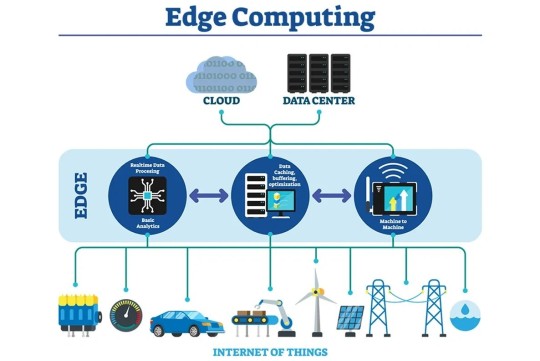
With nearly 75 billion connected devices expected globally, edge computing — where data is processed closer to the source — will become the standard. It reduces latency, cuts bandwidth costs, and enhances security. Edge computing is especially crucial for time-sensitive applications like autonomous vehicles, smart cities, and industrial automation.
5. Ambient Computing Redefines UX
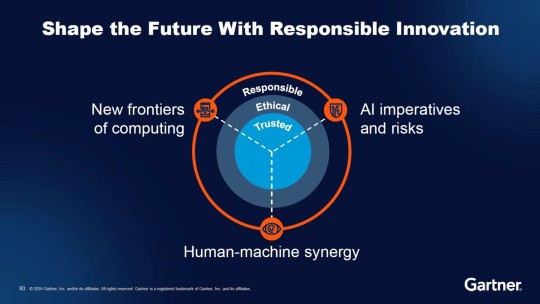
Technology is becoming invisible. Ambient computing — systems that respond without direct interaction — creates seamless user experiences. Smart environments adapt lighting, temperature, or digital displays automatically based on human behavior.
By 2026, 60% of developed world households will have some form of ambient tech. In 2025, it becomes a defining feature of intelligent living.
6. Low-Code/No-Code Platforms Empower Everyone

Software development is no longer exclusive to programmers. Low-code and no-code platforms enable business users to build apps visually, drastically reducing development time.
By 2025, 70% of new enterprise applications will be built using these tools. This shift not only accelerates innovation but also helps bridge the talent gap in IT.
Want the full list of all 10 top IT trends that will redefine the future of technology? Read out the complete article here: https://digitalconfex.com/top-10-it-trends-that-will-define-the-future-of-technology-in-2025
Final Thoughts
The IT trends of 2025 go far beyond surface-level upgrades. They represent deep structural shifts in how technology is designed, deployed, and experienced. Businesses that invest in understanding these trends today will be best equipped to lead tomorrow.
If you’re a tech leader, innovator, or strategist looking to stay ahead of the curve, now is the time to align your roadmap with these trends. Start with small experiments, scale what works, and stay flexible as these technologies evolve.
#top 10#tech trends#agentic ai#artificial intelligence#cybersecurity#quantumcomputing#no code#low code#ambient#edge computing#green technology#blockchain#wearabletrends
0 notes
Text
Modernize Legacy Systems Using Low‑Code
Accro’s Legacy Modernization service empowers organizations to transform outdated systems into agile, scalable, and future-ready digital platforms using low-code technology. Rather than replace entire systems at once, Accro follows a structured approach—Extend, Migrate, Replace—to modernize gradually with minimal disruption.
We start by enhancing existing systems with user-friendly interfaces, then migrate critical components to composable architectures, and finally replace outdated modules with customized low-code applications. This phased strategy reduces cost, risk, and downtime. Using microservices, APIs, and cloud-native principles, we enable rapid deployment, better user experience, and seamless integration.
Our low-code platforms accelerate innovation across sectors such as healthcare, logistics, and enterprise IT. With Accro, clients achieve operational resilience, faster time-to-value, and digital transformation aligned with business goals.
#accro#low code#digital customer experience#digital transformation#enterprise app development#legacy system modernization#low code platform#mobile app development#uae
0 notes
Text
Enterprise Application Platform: Future Trends and Innovations
The Enterprise Application Platform (EAP) landscape is constantly evolving, driven by technological advancements and changing business needs. Understanding the future trends and innovations in this area is crucial for businesses looking to stay competitive and maximize the benefits of their EAP investments.

Key Future Trends
AI and Machine Learning (AI/ML) Integration: AI and ML are increasingly being integrated into EAPs to automate tasks, improve decision-making, and personalize user experiences.
Low-Code/No-Code Development: These platforms enable citizen developers to build and deploy applications quickly, reducing the reliance on traditional coding and accelerating digital transformation.
Cloud-Native Architecture: EAPs are increasingly being built on cloud-native architectures, leveraging microservices, containers, and serverless computing to improve scalability, flexibility, and resilience.
Edge Computing: Bringing processing closer to the data source, edge computing enables faster response times and improved performance for IoT devices and other edge applications.
Internet of Things (IoT) Integration: EAPs are becoming more adept at integrating with IoT devices, enabling businesses to collect and analyze data from a wider range of sources.
Microservices Architecture: This architectural style allows for the development of applications as a collection of small, independent services, improving flexibility and maintainability.
Serverless Computing: This model allows developers to build and run applications without managing servers, reducing operational overhead and improving scalability.
Enhanced Security: With increasing cyber threats, EAPs are incorporating advanced security features to protect sensitive business data and ensure compliance with industry regulations.
Impact on Businesses
These future trends will have a significant impact on businesses, enabling them to:
Automate complex processes: AI/ML will automate tasks that were previously done manually, freeing up employees for more strategic work.
Develop applications faster: Low-code/no-code platforms will accelerate the development and deployment of new applications.
Improve scalability and flexibility: Cloud-native architectures will allow businesses to scale their applications easily and adapt to changing demands.
Gain real-time insights: Edge computing and IoT integration will provide businesses with access to real-time data from a wider range of sources.
Enhance security: Advanced security features will protect sensitive business data and ensure compliance.
Conclusion
The future of Enterprise Application Platforms is exciting, with numerous innovations on the horizon. By understanding these trends and adopting the right technologies, businesses can transform their operations, improve efficiency, and achieve sustainable growth in the years to come.
Ai Auto code
AI Wave maker
Rapid low code application development platform
Low code platform Enterprise software for application development
Low code application development platform or Low code platform for application development
What is Low code app development platforms
Composable low code isvs
Java-based low code platform
Composable isvs
RAD studio-Rapid application development software platform
APAAS-application platform as a service
Cloud Low code application development platform
Legacy application modernization solutions
React-native cross-platform mobile application development platform
Compare Wavemaker vs Outsystems vs mendix vs power apps — low code alternatives and its pricing
New and fast application development platform
Rapid application development model or RAD model
Low-code for consumable Banking and financial Low-code platform solutions
Internal api vs external apis
Rapid application development vs SDLC Platform
Custom Enterprise low code application development platform
Legacy enterprise application Modernization Platform
Embedded banking and Finance, Low-Code and the Emerging Face of Adaptability
BAAS- Low code Banking as a service
Composable Low code banking solutions
Telecom low code platform
Alternative to Xamarin and Cordova
Wavemaker Low code
Legacy application modernization platform
Cross-Platform React Native Mobile App Development Platform
#technology#software#low code#lowcode#app#app development#business#low code application development platform#rad#reactnative
1 note
·
View note
Text
How Low-Code Can Help Non-Tech Entrepreneurs Launch Their Tech Startups

Thousands of non-tech entrepreneurs are sitting on innovative ideas, but one thing holds them back: the assumption that launching a tech company requires deep coding skills or a pricey development team. That’s no longer true. Thanks to low-code platforms, you can now turn your startup vision into reality — without writing a single line of code.
Low-code development is transforming how startups are built, giving non-technical founders the power to create fully functional, scalable applications using intuitive drag-and-drop tools, visual workflows, and smart code generation. It’s faster, more affordable, and more accessible than ever before.
In this blog, we’ll explore how low-code platforms are unlocking new opportunities for entrepreneurs from non-technical backgrounds, what makes them so powerful, and how platforms like FAB Builder are leading the charge in reshaping the startup ecosystem.
What Is a Low‑Code Platform?
A low-code platform is a software environment that uses graphical interfaces, drag-and-drop modules, templates, and automation to rapidly build apps with minimal manual coding. Unlike traditional development, which requires writing hundreds or thousands of lines of code, low-code frameworks simplify the process — letting users focus on functionality and design, rather than syntax.
These platforms often include:
Visual builders (form-designers, workflows, UI layout)
Back-end automation (database creation, API integration)
Deploy & host options (cloud deployments, hosting)
Analytics & monitoring tools
By abstracting away complexity, low-code platforms speed up development, reduce errors, and empower people without programming skills.
Understanding the Power of Low-Code Platforms
A low-code platform is an application development environment that allows users to create apps with minimal hand-coding. Instead of relying entirely on a software engineer to build every piece of code, non-tech founders can use visual components and pre-built logic to create applications. This approach enables faster deployment, iterative testing, and more direct involvement in the product-building process.
Unlike traditional coding, where every function must be manually written, low-code relies on intuitive visual builders, drag-and-drop features, and reusable templates, allowing even those with limited technical knowledge to bring digital products to life.
Why Non-Tech Entrepreneurs Struggle in the Tech Startup Space
While the startup ecosystem celebrates innovation, it still heavily favors individuals with coding skills or technical co-founders. Here’s why non-tech entrepreneurs face hurdles:
Lack of coding expertise: Without the ability to build a minimum viable product (MVP), founders struggle to validate their ideas.
Expensive developer costs: Hiring a development team or outsourcing a project can be financially draining.
Communication gaps: Founders often struggle to explain their product vision to developers.
Time-consuming development cycles: Traditional software development can take months, if not years.
These challenges often leave brilliant ideas stuck on the drawing board.
The Low-Code Solution: Empowering the Non-Tech Founder
Low-code development platforms offer the perfect workaround to these common startup pitfalls. They allow founders to:
1. Prototype and Launch Quickly
One of the most significant advantages of using a low-code platform is the ability to turn ideas into functional prototypes in days rather than months. This speed is critical in the startup world, where early feedback, funding opportunities, and market validation are time-sensitive.
2. Reduce Development Costs
Hiring developers or contracting a software firm can cost thousands of dollars. With a code builder and visual interface, entrepreneurs can drastically lower their initial expenses, focusing resources on other critical areas such as marketing or customer acquisition.
3. Control and Flexibility
Low-code tools offer the founder more control over their product. You can tweak, customize, and test features independently without relying on a development team. Whether you want to change the UI, integrate a payment gateway, or update workflows, it’s all doable with minimal technical support.
4. Foster Collaboration
Many low-code platforms support real-time collaboration, allowing product managers, designers, and marketers to work together within the same ecosystem. This alignment leads to more coherent product development and faster decision-making.
Introducing FAB Builder: A Game-Changer for Non-Tech Entrepreneurs
Among the many application development platforms available today, FAB Builder stands out as a powerful and intuitive tool designed for both technical and non-technical users.
What is FAB Builder?
FAB Builder is an advanced low-code platform that helps users design and develop applications visually while ensuring the underlying code is clean, efficient, and scalable. It’s ideal for non-tech entrepreneurs who want to launch apps without needing to learn full-stack development.
One standout player in the low-code ecosystem is FAB Builder — a comprehensive low-code platform designed to help startups and enterprises build scalable web and mobile apps.
Key Features & Highlights:
FAB Studio: Intuitive visual UI for building web and mobile apps, powered by AI — no coding required, perfect for rapid prototyping.
Code Generation: Instantly create full-stack, production-ready code in React, Node.js, Java, or Flutter using simple visual tools.
100% Code Ownership: Download and fully customize your app’s source code — no vendor lock-in, complete freedom to scale your way.
Drag-and-Drop Builder: Design stunning user interfaces with reusable components, templates, and easy-to-use visual blocks.
AI Assistance: Use plain language prompts to generate entire app flows — front-end, back-end, and database with Swagger support.
Quick Preview & Deploy: Instantly view your app in real time and deploy it with a single click to any environment of your choice.
Rich Integrations: Seamlessly integrate features like login, payments, email, storage, and third-party APIs with just a few clicks.
Enterprise Features: Includes built-in support for multi-tenancy, global languages, role-based access, and enterprise-grade security.
Visualize launching a native mobile or web app built with Flutter or MERN without manually writing boilerplate code. That’s the promise FAB Builder delivers.
Real-World Use Case: Building a Startup with Low Code Experience
Let’s say you’re an aspiring founder with an idea for a food delivery platform catering to local home chefs. Here’s how a low-code platform like FAB Builder can help you:
Design your application using FAB Studio with drag-and-drop components.
Use the page builder to create user-friendly interfaces for customers and chefs.
Let the AI code generator handle backend logic such as user sign-up, payment processing, and order management.
Integrate third-party services like Google Maps or Razorpay within minutes.
Launch a working MVP within weeks instead of months.
You now have a functioning startup application — built without writing a single line of code.
Key Benefits of Using Low-Code Platforms for Startup Founders
Rapid MVP Creation
Speed is a competitive advantage in the startup world. Low-code enables fast prototyping, which means you can test your concept with real users early on.
Easy Pivoting
Startup ideas evolve. A low-code environment allows you to make changes on the fly without going through long redevelopment cycles.
Focus on Core Business
Instead of getting tangled in tech development, you can concentrate on refining your product idea, understanding your target market, and building your brand.
Lower Technical Debt
Unlike messy hand-coded applications by inexperienced freelancers, low-code platforms ensure optimized and consistent code.
Why Low-Code Still Needs Basic Tech Understanding
It’s essential to remember that while low-code platforms make development easier, founders still need a basic understanding of:
User experience (UX) principles
Business logic and workflows
Market validation
Customer journey mapping
This foundational knowledge helps in making informed design and product decisions, even within a low-code environment.
Turn Ideas Into Apps Fast with Low-Code Platforms
The rise of low-code platforms signifies a democratization of technology. Today, anyone with a vision — regardless of their technical background — can build digital solutions that solve real-world problems. Whether you’re planning to launch a mobile app, an internal business tool, or a customer portal, low-code makes the process accessible and empowering.
Entrepreneurs now have the tools they need to:
Launch lean startups
Validate ideas with real users
Iterate based on feedback
Scale efficiently
By reducing barriers to entry, low-code technology is no longer just a convenience — it’s a startup enabler.
Final Thoughts
The startup world has always belonged to the risk-takers, the dreamers, and the doers. But for too long, the lack of technical knowledge has held many innovators back. Now, with the rise of low-code platforms like FAB Builder, the gap between idea and execution is narrower than ever.
If you’re a non-tech founder with a game-changing idea, now is the time to act. Leverage the power of low-code development, cut down your time-to-market, and bring your vision to life — without waiting for a tech co-founder or blowing your budget.
The next big startup success story might just be yours — all it takes is a platform, a plan, and your passion.
Frequently Asked Questions
1. What is a low-code platform? A low-code platform allows users to build applications using visual tools and minimal coding, making it ideal for non-technical entrepreneurs.
2. Can I launch a startup without knowing how to code? Yes! With platforms like FAB Builder, non-tech founders can create fully functional web or mobile apps without writing code manually.
3. Is the code generated by FAB Builder customizable? Absolutely. FAB Builder provides full source code access, allowing you to customize or scale your app as needed.
4. What types of apps can I build with FAB Builder? You can create SaaS platforms, admin dashboards, CRMs, booking systems, and even mobile apps using FAB Builder’s flexible tools.
5. How is FAB Builder different from other low-code tools? FAB Builder combines AI code generation, a powerful page builder, exportable code, and scalable architecture — all in one platform designed for startup agility.
0 notes